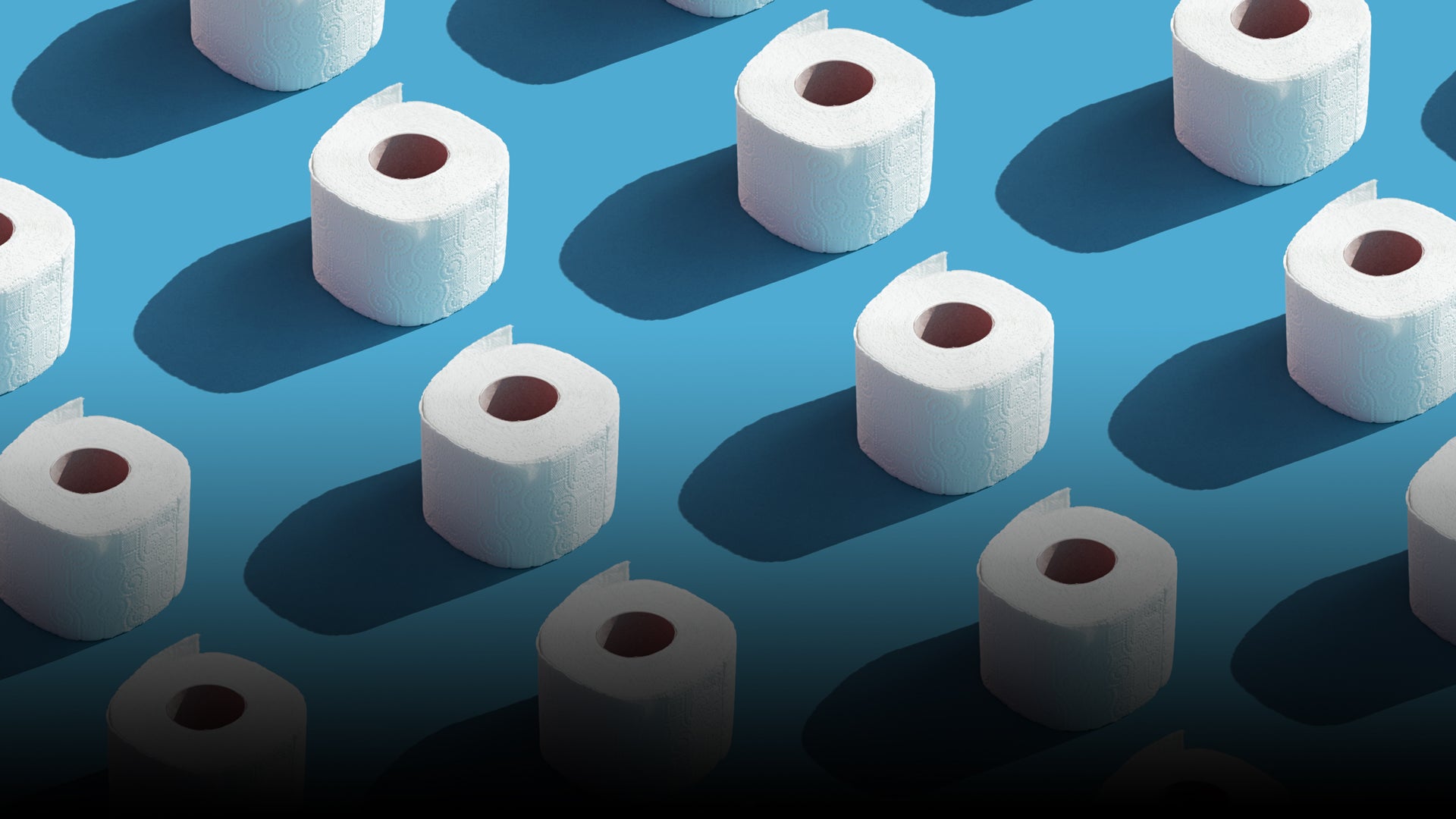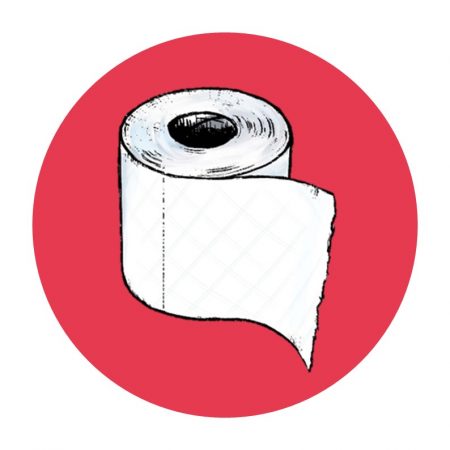toilet paper, an indispensable part of everyday life in modern society, has a rich and fascinating history. From its humble origins as leaves and stones to its current form as soft, absorbent rolls, toilet paper has undergone a remarkable evolution. In this comprehensive article, we will delve into the annals of toilet paper, exploring its origins, cultural significance, and technological advancements.
The Earliest Forms of Toilet Hygiene

The earliest humans likely used whatever materials were readily available to wipe themselves clean. In ancient times, leaves, stones, and animal skins were commonly employed for this purpose. As civilizations developed, more sophisticated methods emerged.
Ancient Civilizations
The Greeks used a special tool called a strigil to scrape sweat and dirt from their bodies. They also devised a rudimentary form of toilet paper made from sheep wool, known as amphorella. This early form of toilet paper was effective but not very comfortable, as it was rough and scratchy on the skin.
The Romans had a more elaborate system of sanitation. They built public toilets and used spongia made from sea sponges to clean themselves. Wealthier Romans employed servants to hold a sponge on a stick, known as a tersorium, for their use. However, this method was not hygienic, as the same sponge would be used by multiple people without proper cleaning in between.
Ancient China:
As early as the 6th century AD, Chinese inventors began producing paper from rags and tree bark. This paper was used for writing, painting, and eventually, toilet hygiene. By the 14th century, the Chinese had developed a form of toilet paper that closely resembles what we use today – thin, absorbent sheets made from bamboo fibers.
The Different Types of Toilet Paper

Over the centuries, toilet paper has taken on many different forms and materials. Here are some of the most notable types of toilet paper throughout history:
- Leaves and Stones: As mentioned earlier, leaves and stones were commonly used as a primitive form of toilet paper.
- Sheep Wool: In ancient Greece, sheep wool was used to create a rough and scratchy form of toilet paper.
- Sea Sponges: The Romans used spongia, made from sea sponges, for their personal hygiene.
- Bamboo Paper: The Chinese developed thin, absorbent sheets made from bamboo fibers.
- Wood Pulp: In the 19th century, wood pulp became a popular material for making toilet paper.
- Recycled Paper: In the early 20th century, recycled paper started being used in the production of toilet paper.
- Softened Paper: In 1928, the first soft, perforated toilet paper was introduced by British company Andrew J. Murray & Sons.
- Multi-Ply: In the 1950s, multi-ply toilet paper became popular, providing increased comfort and absorbency.
- Colored Paper: In the 1960s, colored toilet paper was introduced, with pink being the most popular color.
- Ultra-Soft: In the 1980s, ultra-soft toilet paper made from premium materials such as cotton became available.
- Flushable Wipes: In recent years, flushable wipes have become a popular alternative to traditional toilet paper.
The Environmental Impact of Toilet Paper

With the increasing global concern for the environment, it’s important to consider the impact of toilet paper production and usage. According to National Geographic, the average person uses 100 rolls of toilet paper per year, requiring the cutting down of at least one tree. This amounts to approximately 15 million trees being cut down each year to produce toilet paper for the United States alone.
In addition to the direct impact on trees, toilet paper production also requires large amounts of water and energy. It is estimated that the production of one roll of toilet paper uses 37 gallons of water and emits 1.5 pounds of carbon dioxide.
To combat this environmental impact, many companies have introduced eco-friendly alternatives such as recycled or bamboo toilet paper. These options use less resources and are biodegradable, making them a more sustainable choice for our planet.
The Future of Toilet Paper
As technology continues to advance, so does the way we use and produce toilet paper. One of the most recent developments in the industry is the introduction of smart toilets, which come equipped with features such as built-in bidets and self-cleaning capabilities. These toilets not only reduce the need for toilet paper, but also provide a more hygienic and efficient experience.
There has also been an increase in the popularity of bidet attachments, which can be easily installed on existing toilets. These attachments use water to clean instead of toilet paper, making it a more eco-friendly and cost-effective option in the long run.
Another trend that has emerged is the production of luxury toilet paper. Companies such as Renova and Andrex offer fancy, scented, and patterned toilet paper at a premium price, catering to those who want a more luxurious bathroom experience.
The Great Toilet Paper Shortage of 2020
In early 2020, the world was hit with the COVID-19 pandemic and panic buying ensued. One of the most sought-after items was toilet paper, leading to shortages and empty shelves in stores all over the world. This unexpected event highlighted the importance of toilet paper in our daily lives and sparked conversations about alternative ways to maintain good hygiene without it.
The best toilet paper for Your Needs
With so many different types of toilet paper available, it can be overwhelming to choose the best one for your needs. Here are some factors to consider when buying toilet paper:
- Material: The material of the toilet paper can greatly affect its softness and absorbency. Some popular materials include wood pulp, bamboo, and recycled paper.
- Ply: The number of layers, or ply, can also impact the strength and softness of the toilet paper. Generally, the higher the ply, the more comfortable it will be.
- Texture: Some toilet paper may have a textured surface for improved cleaning, while others have a smoother texture for comfort.
- Eco-friendliness: If environmental impact is a concern for you, opt for recycled or bamboo toilet paper instead of traditional wood pulp.
- Cost: Toilet paper comes in a wide range of prices, so consider your budget when deciding on a brand or type.
- Personal preference: Ultimately, the best toilet paper for you will depend on your personal preferences and needs. Don’t be afraid to try different types until you find one that works for you.
How to Make Your Own Toilet Paper
In times of scarcity or as an alternative to store-bought options, it is possible to make your own toilet paper at home. Here’s a simple recipe to get you started:
Ingredients:
- 1 roll of thick, absorbent paper towels
- 1 cup of water
- 1 tablespoon of baby oil
- 1 tablespoon of baby wash
- Container with a lid
Instructions:
- Cut the roll of paper towels in half using a sharp knife.
- Mix the water, baby oil, and baby wash in the container.
- Place the paper towel halves into the container, cut-side down.
- Let the paper towels soak up the mixture for a few minutes.
- Gently remove the cardboard tube from the center of the paper towels.
- Pull out the wipes from the center, just like you would with regular toilet paper.
- Store the wipes in a container with a lid to keep them moist and fresh.
This homemade toilet paper can be used just like traditional toilet paper, but it may not be as soft or absorbent. It’s best to use it as a temporary solution or in emergency situations.
The Science of Toilet Paper
While most people don’t give much thought to toilet paper besides its function, there is actually a science behind its design. The ideal toilet paper should have the perfect balance of strength, absorbency, and softness.
One key factor is the type of fibers used in the production of toilet paper. Natural fibers such as wood pulp or bamboo are commonly used, as they provide strength and absorbency. However, synthetic fibers, such as polyester and polypropylene, can also be added to give the paper more strength and softness.
The manufacturing process also plays a role in creating the perfect toilet paper. For example, the amount of pressure applied during the pressing stage affects the softness and thickness of the paper. In addition, the number of plies and embossing techniques can also impact the overall feel and performance of the toilet paper.
The Rituals of Toilet Paper
Toilet paper has become such an integral part of our daily routines that it has taken on a ritualistic significance. Some rituals associated with toilet paper include:
- The way we fold or scrunch the paper before using it.
- The direction in which the toilet paper roll hangs (over vs. under).
- The number of squares we use per wipe.
- The act of checking for leftover tissue after using the bathroom.
- The way we dispose of used toilet paper.
These rituals may seem insignificant, but they have become ingrained in our daily habits and reflect the cultural importance and familiarity of toilet paper in our lives.
The Cultural Significance of Toilet Paper
Toilet paper, while often seen as a mundane and ordinary item, actually carries a great deal of cultural significance. In many Western cultures, it is considered a basic necessity and readily available in most households and public spaces.
In some cultures, toilet paper is not as widely used or accessible. For instance, in parts of Asia and the Middle East, people use water to clean themselves instead of toilet paper. This cultural difference has sparked debates about hygiene and personal preferences.
Additionally, toilet paper has become a symbol of luxury and status in some societies. Expensive and designer toilet paper has emerged as a way for people to display their wealth and taste. This further highlights the cultural importance of toilet paper beyond its practical function.
Conclusion
Toilet paper may seem like a mundane topic, but its history and evolution tell a fascinating tale. From ancient civilizations using leaves and stones to modern society’s reliance on soft, multi-ply rolls, toilet paper has come a long way. As we continue to advance technologically and environmentally, it will be interesting to see how toilet paper evolves in the future. Whether you prefer traditional rolls, eco-friendly options, or high-tech toilets, one thing is for sure – toilet paper will always be an essential part of our daily lives.